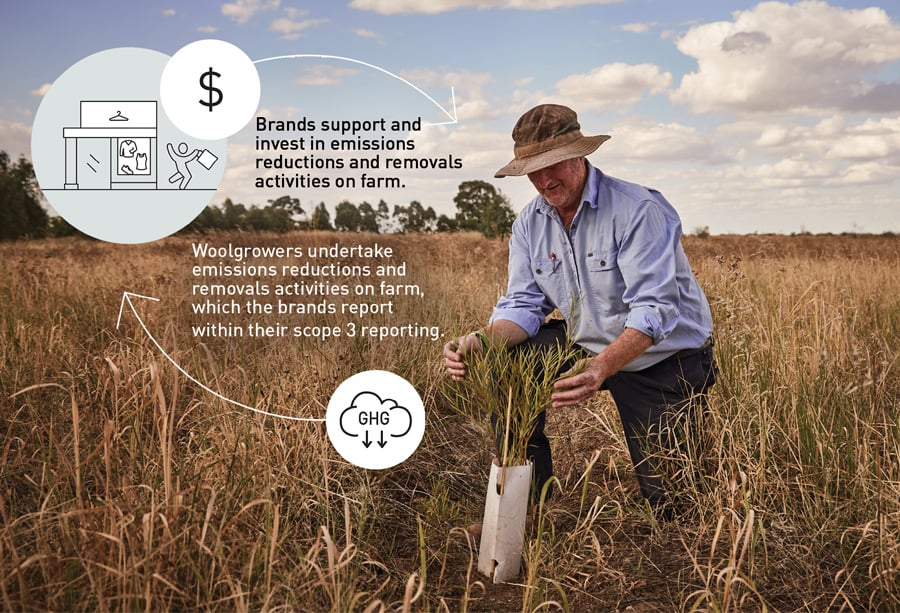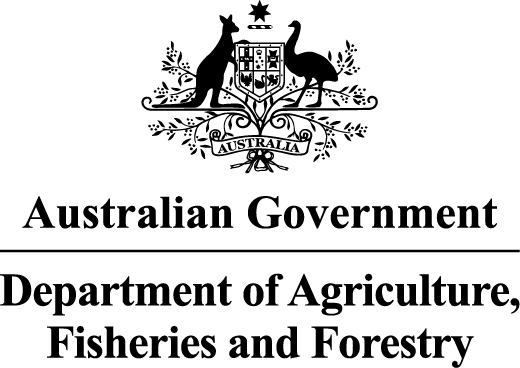Brands are invited to join our ground-breaking Woolmark+ pilot program, aimed at enabling emissions reductions within the textile supply chain.
The Woolmark+ Australian Wool Insetting Program aims to connect fashion and textile brands directly with woolgrowers to drive emissions reductions within the industry. By leveraging nature-based solutions on-farm, we’re keeping sustainability rooted in fashion and textiles. A 36-month pilot program is currently under way.

How can brands take part
Brands can reduce their scope 3 emissions by joining the Woolmark+ Australian Wool Insetting Pilot Program.
The Woolmark+ Australian Wool Insetting Program explained
The Woolmark+ Australian Wool Insetting Program - starting with a 36-month pilot - aims to connect brands with scope 3 emission reduction targets to woolgrowers. Through insetting, we’re seeking to bridge the gap between supply and demand through reduction and removal activities on wool farms, ultimately accelerating nature positive action.
How insetting works in the wool value chain
By supporting nature-based solutions such as environmental plantings and best-practice flock management, the Woolmark+ Australian Wool Insetting Program aims to lay the foundation for scalable emissions reductions with rigorous integrity standards.


The Woolmark+ Australian Wool Insetting Program is supported by the Australian Government through funding from the Climate-Smart Agriculture Program under the Natural Heritage Trust.
FAQs
What is insetting?
Insetting refers to initiatives that occur within a company’s value chain to reduce the environmental footprint directly related to the company’s business activities. To date, insetting has been used to incentivise scope 3 GHG emissions reductions and removals however, insetting could be used as a mechanism to reduce a company’s impact on nature more broadly.
What are some reductions and removals example activities on wool-growing farms?
- Native Mixed-Species Environmental Plantings: Direct seeding of locally appropriate native trees and shrubs in block and/or shelterbelt plantings.
- Feed Supplementation: Dietary supplementation of grazing sheep flock with feed supplements that reduce enteric methane emissions.
- Flock Productivity: Livestock management strategies can cut emissions by reducing either emissions intensity (emissions per unit of output) or the amount of methane an animal produces. These strategies may include using feed additives, breeding earlier, keeping high-performing animals, improving fertility, enhancing animal health and welfare, selecting low-methane-producing animals, and growing methane-reducing pastures.
What is the cost of participation?
Brands will provide a participation fee through the investment and advisory firm partner and will have the option to further scale their investment based on the scale of impact they require. The return on the finance provided by the brand will be emissions reductions and associated co-benefits.
Can brands choose the wool-growing farm that participates?
The wool-growing properties will meet the required criteria as defined by the members of the project including participating brands. Input from brands will be sought as part of this process.
Will the emissions reductions be attached to the wool?
This project is designed to trial best-practice insetting within the wool value chain. The emissions reductions could either be attached to the wool if in a fully traceable system or be a separate transaction in a supply-shed approach which may be explored.
How can the emissions reductions be traceable?
There are several options which can be explored as part of the pilot.
How will the activities on farm be monitored and verified?
An independent third-party verifier will monitor and report on the emissions reductions achieved.